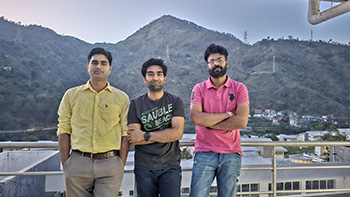MANDI- Researchers from the Indian Institute of Technology (IIT) Mandi have conducted a study on the relationship between elevation and drought characteristics in the Indus River basin in India.
The findings of this study, which have been published in the journal Atmospheric Research, offer valuable insights into water management and climate adaptation strategies for the region.
The research paper, co-authored by Dr. Deepak Swami and Dr. Vivek Gupta from IIT Mandi, along with Dr. Nitin Joshi from IIT Jammu and their Ph.D. scholar Mr. Amit Dubey, highlights the increasing demand for water coupled with limited availability due to population growth and climate change.
The study emphasizes the importance of understanding drought trends in relation to elevation for effective water management and planning.
The researchers focused on high-altitude regions, which are particularly susceptible to the impacts of climate change, including droughts.
By analyzing the connection between drought trends and elevation over different time scales, they aimed to predict droughts and develop strategies to mitigate their effects.
The Indus River basin was chosen as the study area due to its significance in terms of agricultural productivity and water supply in the Indian subcontinent. The basin's wide range of elevations, spanning from 93 to 8,489 meters, provided an ideal setting for exploring the relationship between elevation and drought characteristics.
The research team employed statistical techniques and analyzed extensive data on monthly precipitation, maximum and minimum temperatures from a period of 42 years (1979-2020) to study drought patterns. Drought quantification was done using a drought indicator based on climatic water balance, which is essential for understanding droughts.
The findings of the study revealed a strong correlation between drought and elevation.
Regions below 2,000 meters experienced wetting trends, while elevations between 2,000 and 6,000 meters showed drying trends. However, elevations above 4,000 meters had a slower rate of drying.
The research also highlighted the heterogeneity in drought trends across different seasons. The monsoon and post-monsoon seasons experienced larger areas with wetting trends, whereas the pre-monsoon season saw a larger area with drying trends.
Extreme drought frequencies in the study region ranged from 0% to 5% between 1979 and 2020.
Overall, the study indicated that higher altitudes in the region tend to be drier, while lower elevations experience wetter conditions.
These insights are particularly significant for India, as rain-fed agriculture is prevalent in the highlands of the Indus River basin.
The topography of the region, coupled with limited water storage and irrigation infrastructure, makes it vulnerable to water scarcity and reduced crop yields during dry periods.
Understanding the impact of elevation on meteorological variables is crucial for formulating effective policies to mitigate the negative impacts of drought.






